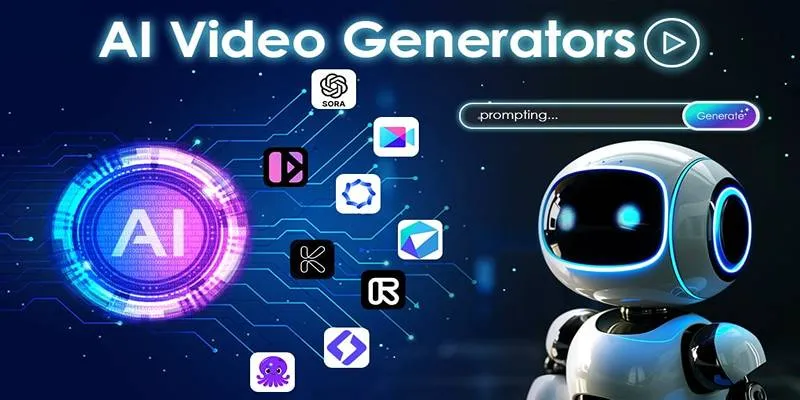JavaScript has traditionally been the primary language for web development, but its potential extends far beyond that. In 2025, utilizing JavaScript for machine learning (ML) is a trend you shouldn’t overlook. JavaScript’s versatility and widespread adoption make it an ideal language for ML applications. While Python has traditionally been the leader, JavaScript is rapidly catching up with powerful tools and frameworks, enabling developers to build and train ML models effectively.
With advancements in JavaScript-based ML tools like TensorFlow.js and Brain.js, ML capabilities are now accessible in both Node.js and browser environments. Given the growing trends in edge computing and real-time artificial intelligence, JavaScript offers unique advantages. This article will explore why 2025 is the perfect time to delve into JavaScript for machine learning and how it can transform your approach.

**Why 2025 is the Perfect Year to Leverage JavaScript for Machine
Learning?**
Here is why 2025 is the ideal year to use JavaScript for machine learning and its expanding features:
The Rise of JavaScript for Machine Learning
The increasing significance of JavaScript in machine learning is not by chance. Its evolution over the years has made it a valuable tool for developers across various fields. JavaScript is now a viable option for building and deploying ML models with frameworks like TensorFlow.js and ML5.js. This versatile language supports deep learning, data processing, and real-time artificial intelligence applications. By 2025, JavaScript has advanced to the point where developers no longer need to rely on other languages like Python for machine learning tasks. TensorFlow.js and other libraries enable machine learning models to run directly in the browser, opening exciting new possibilities for user-facing projects.
Real-Time Applications Powered by JavaScript
JavaScript’s ability to run real-time applications is a key factor driving its adoption for machine learning in 2025. Applications requiring rapid data processing and decision-making find JavaScript’s asynchronous nature and event-driven architecture ideal. Whether it’s real-time object detection in videos or a live recommendation engine, JavaScript can efficiently handle such tasks. Libraries like Brain.js allow developers to quickly build neural networks in real time, creating intelligent applications that respond to changing input. This capability is especially valuable in sectors like finance, healthcare, and e-commerce, where fast decisions and actions are crucial. JavaScript enables the creation of ML models that update and adapt to new data without server-side configuration.
Edge Computing and JavaScript’s Role
Modern applications rely heavily on edge computing, which is becoming a fundamental component. Instead of depending on centralized servers, edge computing involves processing data closer to the source. JavaScript plays a crucial role in edge computing as it allows machine learning models to run on devices such as smart cameras, IoT devices, and smartphones. TensorFlow.js and similar frameworks enable developers to bring machine learning models to edge devices, reducing latency and enabling more efficient processing. As more devices gain the capability to run sophisticated ML models, this trend will continue to grow in 2025. For industries relying on real-time, data-intensive applications, edge computing powered by JavaScript is transformative.

JavaScript for Democratizing Machine Learning
One of the most exciting aspects of using JavaScript for machine learning in 2025 is its potential to democratize access to artificial intelligence and machine learning. Many developers are familiar with JavaScript, whereas Python presents a steeper learning curve for newcomers. Its widespread popularity in web development means that many developers already have JavaScript skills. JavaScript’s simplicity and ease of use make it an excellent starting point for those looking to venture into machine learning. With the right tools and frameworks, anyone can begin experimenting with ML models in their web applications without needing an in-depth understanding of complex mathematics or algorithms. JavaScript’s accessibility makes it a great tool for experimentation, learning, and even small-scale machine-learning projects.
The Ecosystem and Community Support
JavaScript’s extensive ecosystem and community support provide another compelling reason to consider it for machine learning in 2025. JavaScript developers have access to a wealth of resources, tutorials, and forums to learn about machine learning concepts and best practices. One of JavaScript’s greatest strengths has always been its community-driven nature, and the development of ML-specific libraries only enhances this advantage. Tools like TensorFlow.js have a robust and growing community that helps improve the library. JavaScript’s ML ecosystem offers all the necessary resources for machine learning beginners, from pre-trained models to user guides. Leveraging JavaScript’s ecosystem can help developers quickly integrate machine learning into their projects by finding solutions to challenges and consulting with experienced ML practitioners.
JavaScript’s Integration with Other Technologies
JavaScript’s seamless integration with other technologies will make it even more appealing for machine learning in 2025. JavaScript can connect and manage various components of a machine learning pipeline, from databases to APIs to cloud services. Its ability to interface with other languages like Python and R allows developers to use the best tools for each stage of the machine learning process. For instance, TensorFlow.js can run models in the browser, while data preparation can be handled in Python. This interoperability ensures that developers can maximize the strengths of each language while primarily using JavaScript as the foundation for deployment.
Reducing Infrastructure Costs
Running machine learning models on centralized servers or cloud infrastructure can be costly. JavaScript offers a cost-effective alternative by allowing developers to run models directly on local devices or in the browser, significantly reducing infrastructure expenses. This approach is particularly beneficial for small businesses or startups that may not have the resources to maintain expensive cloud-based ML solutions. By offloading computation to client-side devices, JavaScript enables more affordable machine learning solutions. Additionally, this method reduces the demand for powerful servers and associated energy consumption, making it a more environmentally friendly choice for ML applications.
Conclusion:
By 2025, JavaScript has emerged as a highly effective tool for machine learning. Its adaptability, ease of use, and growing ecosystem of ML libraries make it an excellent choice for developers aiming to create intelligent applications. JavaScript offers unique advantages for machine learning, from edge computing and real-time processing to democratizing access to artificial intelligence. Leveraging JavaScript for machine learning will allow developers to stay ahead of the curve as the demand for artificial intelligence continues to rise. If you haven’t already, this year is the ideal time to start incorporating JavaScript into your ML projects and fully capitalize on its potential.
 zfn9
zfn9






















